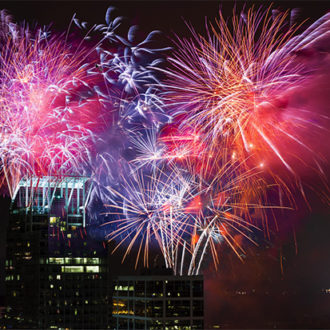More Than Just a Shooter

I fondly remember my good old days back in the early ’80s as a professional photographer. In the field, from a technical standpoint, all I had to know was how to expose a frame of Kodachrome 35mm film. When I returned home, I sent off my film to the photo lab for processing and waited impatiently to see the results of my efforts.

When my film came back, I examined each slide on a light table. If a slide, which has a narrow exposure latitude/tolerance, was overexposed, I tossed it immediately. There was no hope to save it. If it was slightly underexposed, there was hope! A company called Edwal offered a product called Correct-a-Chrome, which consisted of chemicals and trays in which you dipped a slide, held with tweezers, until the desired result was achieved.
For presentations, I used duplicate slides in glass mounts placed in carousel trays sitting atop a carousel projector. (I know I’m showing my age, but so are the programmers who develop Microsoft Word, because unlike the word Photoshop, Kodachrome isn’t showing up in Word’s dictionary.)
Today, it seems as though I have to know about 100 more things as a professional photographer if I want to keep up with my competition—and that includes my friends.
For those of you who are thinking about becoming full-time pro shooters, I thought I’d put together a list of must-know photo-pro info. (As illustrations for this article, I’ll use some of the RAW files I took during Venice Carnival 2008 in Italy with my Canon EOS-1Ds Mark III.)

Camera settings
Today, knowing how Quality settings, ISO, White Balance, Color Space (Adobe RGB vs. sRGB), and in-camera noise reduction (on-sensor and in-processor) can affect an image is key to getting a good image. For example, did you know that you get fewer pictures on a memory card when your camera is set at a high ISO than when it’s set at a lower ISO, and that as the detail in a scene increases, so does the file size? Here are some things you’ll need to know about your camera:
• You should be completely familiar with your camera’s menu, which can offer dozens and dozens of options that help you fine-tune your pictures—or ruin them if not set correctly.
• Research (on the Web) the sensor quality of different cameras—more pixels doesn’t necessarily mean a better quality image.
• You may even have to know how to print directly from your camera and shoot wirelessly, transmitting your files to a remote computer.
• Finally, research which memory cards are best for your particular needs when it comes to GB size and write speeds (maybe you need a write accelerated card, maybe you don’t).
• Hopefully, you won’t ever have to use image recovery software for any of your memory cards—but it never hurts to learn anyway. These programs were developed for a reason.

Image-processing programs
Today, photography is part image capture and part image processing—whether you use Photoshop, Camera Raw, Lightroom, Aperture, or the software that came on the CD that was packed with your digital camera. So here are some things to keep in mind when it comes to postprocessing:
• Shoot with the end result in mind, and know all the creative and corrective possibilities that are available to you in the digital darkroom with a few clicks of a mouse, or tap of a stylus on a tablet.
• Learn about Photoshop plug-ins that can help you take further advantage of Photoshop, expanding your photographic horizons and creative endeavors.
• Of course, make sure that Photoshop (or other image-processing program) can open your RAW files, which may not be the case unless you download the latest version of the Camera Raw plug-in from www.adobe.com for your brand-new camera.
• You need to know if it’s necessary to open an image in Photoshop as a 16-bit file, which limits the use of some filters and other features in Photoshop, verses an 8-bit file.
• If you publish books or magazine articles, you may have to learn about the Photoshop CMYK Color Settings (Edit>Color Settings) and how to convert your RGB files to CMYK files. You also may need to know about onscreen proofing (View>Proof Setup).

Computer system
While installing Leopard on my Mac a few months ago, I was reminded of just how much a photographer has to know about his or her computer—like how important it is to choose the Archive and Install option (which preserves all hard drive data) as opposed to just choosing the Clean Install option (which erases all hard drive data).
• Be prepared to repair a hard drive (using Disk Utility on a Mac or the Error Checking utility in Vista), which could help or, if not done correctly, could erase a drive. But more importantly, find out the best methods for backing up your data (now made easier for Mac users with Time Machine in Leopard) and hooking up accessory drives, memory card readers, and so on.
• It’s also critical to calibrate your monitor, which if not done correctly could make people in your pictures look as though they came from Mars (with green skin).
• If you give presentations using your laptop and are very serious about color and image quality, know which color profile and resolution to select in your System Preferences (explained to me once by Photoshop Hall of Fame inductee Eddie Tapp).
• If you’re using a projector for your presentations, you’ll also have to calibrate the projector (using X-Rite i1 products, for example). But first, you need to start with a knockout presentation, which involves putting together an interesting show with great photographs in Keynote or PowerPoint. Be sure to use images with the correct resolution. I import 7×9″ JPEGs into Keynote and they look pretty darn good onscreen.
• If you make inkjet prints, using the correct ICC profile, as well as choosing the appropriate option for image quality and paper in the printer’s driver, is key to getting a great print. You also have to do some basic maintenance on your printer, such as cleaning the nozzles via the printer’s software.
• If you upload pictures to an online lab, find out the lab’s image-quality and color-space settings, as well as cropping recommendations.

Keep current
Of utmost importance is that you keep current with what’s happing in the world of digital imaging. Thank goodness we have the Web to keep us informed about the latest and greatest technology—hardware, software, plug-ins, and techniques.
For example, do a Web search for “Jeff Schewe on Camera Raw 4.1,” and you’ll find some totally cool (and very important) stuff about processing your RAW files, including how to use two cool powerful features: Defringe (which helps with specular sensor flooding around hot specular highlights) and Clarity (which does exactly what the name implies).
We also have events such as Photoshop World (www.photoshopworld.com), where a wealth of information can be learned onsite, as well as in the show’s telephone book-size volume that contains tons of how-to articles by the show’s presenters.

So if you’re thinking of becoming a full-time pro, keep in mind that it really is a full-time job—because you’ll spend lots and lots of time learning about today’s technology in addition to taking pictures. And as you know or have guessed, you also need a lot of money to pay for all the digital photography tools and toys.
And speaking of taking pictures, there is one thing that hasn’t changed for me or other pros in all these years—getting the very best in-camera photograph is still the most important objective.

